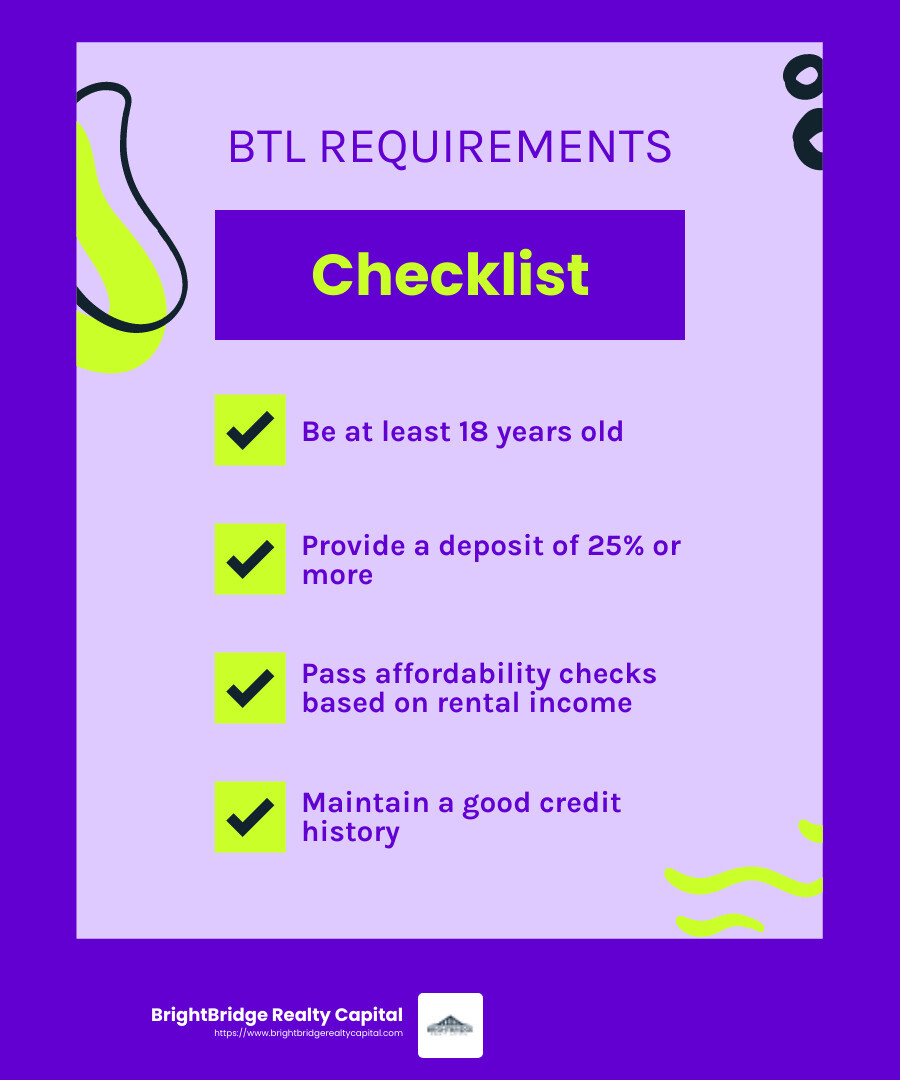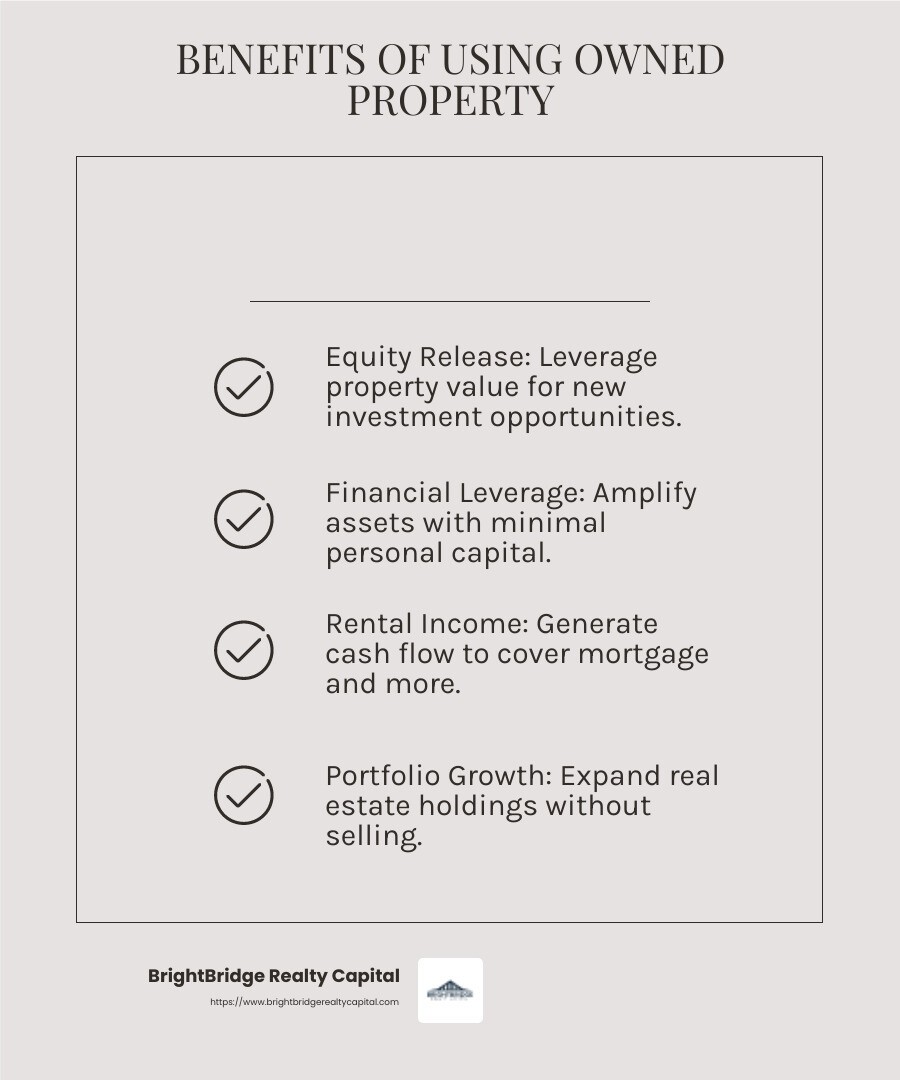The Homeowner's Guide to Buy-to-Let Mortgages: Turning Your Property into Profit

Buy-to-let mortgage on property already owned can be an excellent way for homeowners to leverage existing assets into profitable ventures. This strategy allows you to transform a property you currently own into a source of rental income, potentially offering both financial stability and growth.
Here’s a quick insight:
- Open up home equity: Use your existing property to raise capital.
- Generate rental income: Convert your asset into a cash-generating property.
- Enjoy property appreciation: Benefit from potential increases in property value over time.
With that in mind, turning your property into a buy-to-let can be a savvy investment move. It combines the advantages of owning real estate with the potential for ongoing rental income. Whether you're contemplating your first real estate venture or expanding a property portfolio, this approach could offer a compelling balance of risk and reward.

Buy to let mortgage on property already owned terms simplified:
- buy to let mortgage on current home
- home equity line of credit to buy rental property
- investment property equity line of credit
Understanding Buy-to-Let Mortgages
A buy-to-let mortgage is a specialized loan designed for those who want to purchase a property to rent out, rather than live in it. Unlike standard residential mortgages, these loans come with their own set of requirements and considerations. Let's break down the essentials.
Buy-to-Let Mortgage Requirements
To qualify for a buy-to-let mortgage, you typically need to:
- Be at least 18 years old: Age is a basic eligibility criterion.
- Provide a larger deposit: Most lenders require a deposit of at least 25% of the property's value. This is higher than the typical deposit for a residential mortgage.
- Pass affordability checks: Lenders assess your ability to repay based on expected rental income and other financial factors.
- Have a good credit history: A strong credit score can improve your chances of approval and may help secure better interest rates.

Rental Income
Rental income plays a crucial role in buy-to-let mortgage applications. Lenders often expect the rental income to cover at least 125% of the mortgage repayments. This means if your mortgage payment is $800 per month, your rental income should be at least $1,000.
- Rental Appraisal: Before approving your mortgage, lenders may require a rental appraisal to estimate the potential income from the property.
- Income Verification: While rental income is a key factor, some lenders might also consider your personal income, especially if the rental income falls short of their requirements.
Higher Deposit
The requirement for a higher deposit is due to the increased risk associated with buy-to-let properties. As a landlord, you rely on tenants to cover mortgage payments. If a property remains vacant or tenants default, you need to cover the costs. The larger deposit acts as a buffer for the lender.
- Equity Release: If you already own a property, you might consider remortgaging to release equity. This can provide the funds needed for the deposit on a buy-to-let property.
Understanding these key elements can help you steer the complexities of buy-to-let mortgages. It's essential to assess your financial situation and the potential rental market before diving in. With the right planning and strategy, a buy-to-let mortgage can be a valuable tool for building wealth through real estate.
Buy-to-Let Mortgage on Property Already Owned
Benefits of Using an Owned Property
Owning a property outright gives you a distinct advantage when considering a buy-to-let mortgage on property already owned. Here's why:
Equity Release: If your property is unencumbered (meaning you own it outright), you can tap into its equity. This process, known as remortgaging, allows you to take out a new mortgage on the property. The funds from this can be used for various investment opportunities, like purchasing additional rental properties.
Financial Leverage: By using your property's equity, you can leverage your financial position. This means you can control a larger asset base with relatively less personal capital. It's a powerful way to expand your real estate portfolio without selling your existing property.
Rental Income: Once you've secured a buy-to-let mortgage, you can start renting out your property. This generates rental income, which can cover mortgage payments and even provide extra cash flow. It's a step towards building a steady stream of passive income.

Challenges and Considerations
While the benefits are enticing, there are several challenges and considerations when using an owned property for a buy-to-let mortgage:
Affordability Checks: Lenders will conduct affordability checks to ensure you can handle the mortgage payments. This includes evaluating the expected rental income and your personal financial situation. A strong credit history and a low debt-to-income ratio can improve your chances of approval.
Interest Rates: Buy-to-let mortgages often come with higher interest rates compared to residential mortgages. This is due to the perceived risk of rental properties. Make sure to factor this into your financial planning.
Lender Requirements: Each lender has specific criteria for buy-to-let mortgages. This can include minimum income thresholds, property location, and rental yield expectations. It's crucial to research and compare different lenders to find one that aligns with your needs.
Navigating buy-to-let mortgages on property you already own can be complex, but understanding the benefits and challenges can help you make informed decisions. This sets the stage for the next step—securing a buy-to-let mortgage.
Steps to Secure a Buy-to-Let Mortgage
Preparing Your Application
Securing a buy-to-let mortgage on property already owned involves several key steps. Preparation is crucial to ensure a smooth application process.
Eligibility Criteria: Before applying, check if you meet the lender's eligibility criteria. Generally, you must be at least 18 years old. Some lenders might require a minimum income level, even if you own the property outright.
Credit History: A strong credit history can significantly improve your application. Lenders look for responsible credit behavior. Ensure your credit report is accurate and resolve any outstanding issues before applying.
Income Verification: Even though you plan to rent out the property, lenders still want to see proof of income. This might include recent pay stubs, tax returns, or other documentation that demonstrates your financial stability.
Documentation: Gather all necessary documents before starting the application. This typically includes identification, proof of income, and details about the property. Having everything ready can speed up the process.
Choosing the Right Lender
Selecting the right lender is a crucial step in securing a buy-to-let mortgage. Here’s what to consider:
Interest Rates: Compare interest rates from different lenders. Buy-to-let mortgages often have higher rates than residential ones. Look for competitive rates that fit your financial plan.
Loan Terms: Understand the loan terms offered by lenders. This includes the length of the mortgage and any early repayment penalties. Choose terms that align with your investment strategy.
Lender Flexibility: Some lenders offer more flexible terms than others. This can include options for overpayments or payment holidays. Flexibility can be an advantage if your financial situation changes.
Mortgage Brokers: Consider using a mortgage broker. They can provide expert advice, help you steer the application process, and find the best deals. Brokers often have access to exclusive offers not available directly to consumers.
By carefully preparing your application and choosing the right lender, you can increase your chances of securing a favorable buy-to-let mortgage. This paves the way for turning your property into a profitable investment.
Frequently Asked Questions about Buy-to-Let Mortgages
Can I live in my buy-to-let property?
No, you cannot live in a property financed with a buy-to-let mortgage. These mortgages are specifically designed for properties you intend to rent out. If you want to live in the property, you'll need a standard residential mortgage. This distinction is essential because buy-to-let mortgages have different terms and criteria, such as higher interest rates and larger deposit requirements.
How much deposit is needed for a buy-to-let mortgage?
When it comes to a buy-to-let mortgage, lenders typically require a higher deposit than for a residential mortgage. The standard deposit is usually around 25% of the property's value. This higher deposit acts as a buffer for lenders, considering the perceived higher risk associated with rental properties. Ensuring you have enough savings for this deposit is crucial before applying for a buy-to-let mortgage.
What are the tax implications of a buy-to-let property?
Owning a buy-to-let property comes with specific tax responsibilities and benefits. Here are some key points:
Rental Income: You must declare rental income on your tax return. This income is subject to income tax, but you can deduct certain expenses, such as mortgage interest, property maintenance, and management fees.
Capital Gains Tax (CGT): If you sell the property for more than you paid, you may be liable for CGT on the profit. There are allowances and exemptions, but it's important to factor this in when considering selling.
Stamp Duty Land Tax (SDLT): When purchasing a buy-to-let property, you may have to pay a higher rate of SDLT compared to buying a home to live in. This is an additional cost to consider during your investment planning.
Understanding these tax implications can help you make informed decisions and maximize the profitability of your buy-to-let investment. Always consider consulting with a tax professional to ensure compliance and optimize your tax strategy.
Conclusion
Navigating buy-to-let mortgages can seem daunting, but with the right guidance and support, it can be a rewarding journey. At BrightBridge Realty Capital, we specialize in providing customized real estate financing solutions custom to meet your unique needs as an investor. Whether you're looking to transform an unencumbered property into a profitable rental or expand your property portfolio, we're here to help.
Our approach is straightforward and efficient. We offer fast closings, often within a week, to ensure you can seize opportunities as they arise. Our direct lending model cuts out intermediaries, providing you with competitive rates and a seamless process. This means less hassle and more focus on what truly matters—growing your investment.
By choosing BrightBridge Realty Capital, you're not just securing a mortgage; you're partnering with a team dedicated to your success. Our experts are ready to guide you through every step, from understanding buy-to-let mortgage requirements to navigating tax implications.
Ready to take the next step in your property investment journey? Explore our real estate financing solutions and find how we can help turn your property into profit. Your path to financial growth and stability starts here.


